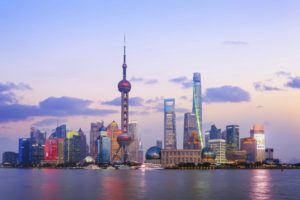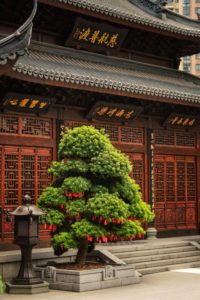
Article by Stefano Macchia
Shanghai doesn’t ask for your attention, but it easily steals it. The variety of the city is one of a kind, as one minute you are under plane trees in a quiet lane and two blocks later you are staring at a skyline that looks like tomorrow got here early.
Getting around is pretty easy, as the Huangpu River splits the city into two clear moods: Puxi on the west bank with the Bund, the old concessions, alley houses and museums; Pudong on the east bank with towers that twist and glow. It’s easy to bounce between them.
Most people start their visit in Shanghai at the Bund. And they are right to. Historic banks and shipping houses line the promenade like a wall of carved stone facing a river that never sleeps. Impossible not to spot every morning motivated joggers, couples doing tai chi and retirees practicing dance. After sunset the opposite bank lights up and the whole thing becomes theater. The Oriental Pearl reads like a bubble wand; Jin Mao steps upward like a pagoda; Shanghai Tower spirals with an unusual confidence.

Cross over to Lujiazui when you have had enough of the view and ride the elevator up Shanghai Tower for an incredible panorama; back at ground level, the lawns and ponds between the towers are surprisingly calm and occasionally full of birds, as if the financial district borrowed a park by accident.
When you need history at eye level, the Old City awaits. Yu Garden is compact but layered: rockeries, ponds and corridors make you feel the warmth of traditional China. Step outside and the air turns to dumpling steam and lantern light.
Art slides in without fuss along Suzhou Creek, where the city has built long, continuous paths for walking and cycling. Industrial buildings have become galleries and studios; at M50 you’ll find murals and cafés. Down by the West Bund the horizon opens; the Long Museum and the Power Station of Art live in repurposed shells that make most exhibitions look bold.
If Shanghai makes you feel overwhelmed by technology and innovation, a visit to the temples could reset the volume. The Jade Buddha Temple smells of incense and polished wood; the pagodas provide a sense of peace with their quite shadows.

Nights can go in any direction. If you want old-world cool, jazz bars ensure an European atmosphere from the 20th century, but if you want height and sparkle, rooftop bars along the river deliver that cliff-edge feeling. In the concessions the cocktail scene is serious but friendly.
Impossible to forget: Shanghai cuisine is gentle, glossy, often red-braised, with soy, sugar, rice wine and ginger pulling things into a comfortable harmony. On the street the flavors jump. Xiaolongbao, famous soup dumplings, shengjianbao, the pan-fried baos, arrive with crispy bases and juicy centers sprinkled with sesame and scallion.
Getting around is simple. The metro is clean, fast and sprawling; stations arrive exactly where you need them. Ride-hailing apps work, taxis are straightforward and bike shares make short hops easy. Walking stays the best way to stitch neighborhoods together; distance compresses because every block offers an excuse to stop.
What lingers after a few days isn’t a single landmark but the way old stone and new glass keep each other honest. The hush of a lane at mid-afternoon and the river’s heavy breathing at night feel like parts of the same sentence. Although Shanghai moves quickly, it is generous with moments. Matching its pace might seem a challenge, but it is highly rewarding.
0 Comments